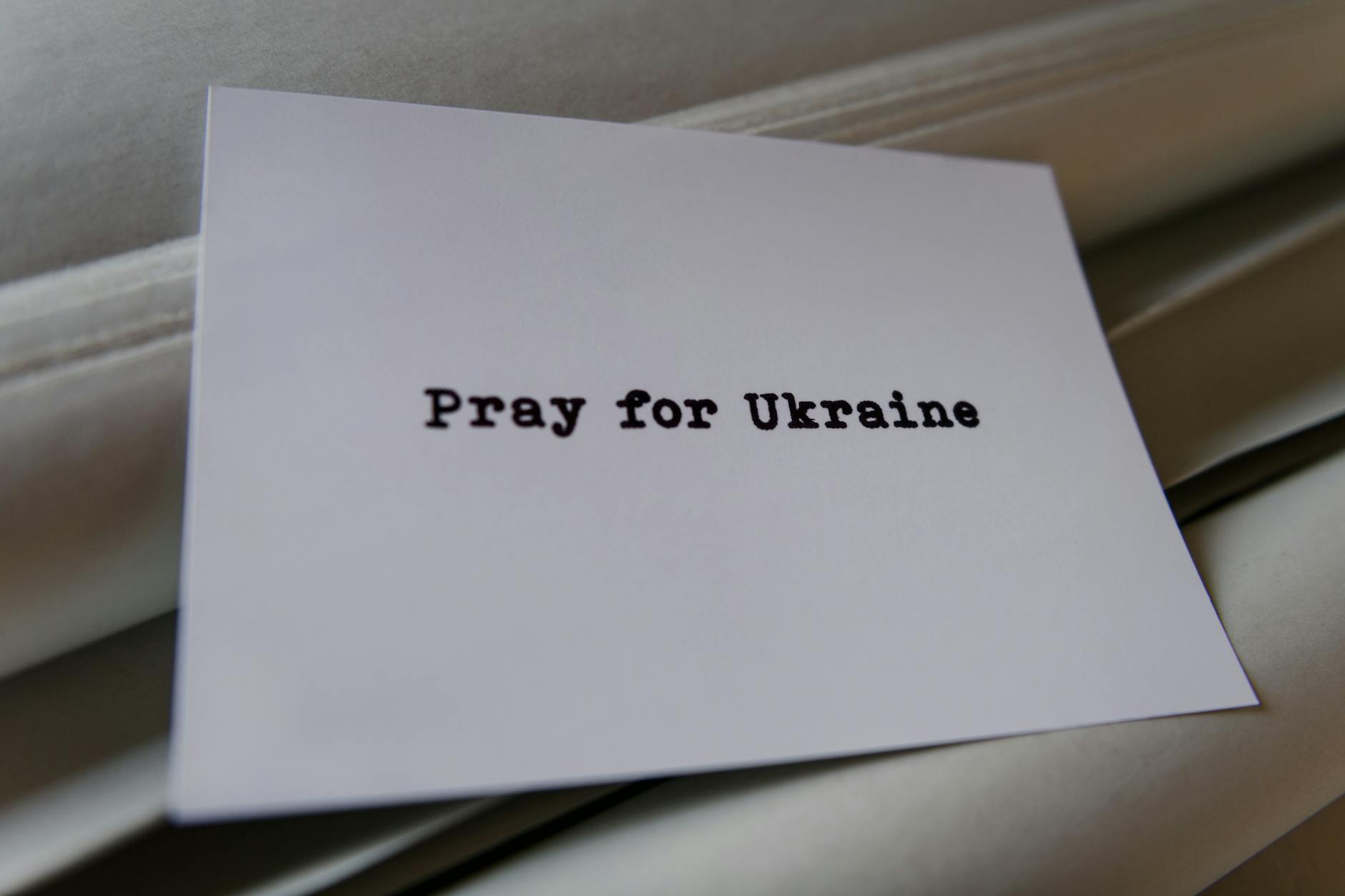The August Deadline: A World Watching as Peace in Ukraine Remains Elusive
Major Garrett’s “The Takeout” Unearthed a President’s Bold Ultimatum Amidst Shifting Geopolitical Sands
On August 8th, the world held its breath. Not for a holiday, nor a sporting event of global magnitude, but for the quiet ticking of a clock set by a U.S. President. Donald Trump, in an unprecedented display of presidential authority, had declared a deadline for Russia to broker a ceasefire with Ukraine. As the designated day arrived, the stark reality was undeniable: the peace deal remained a mirage, the conflict continued, and the implications for international relations, particularly concerning the Trump administration’s approach to federal institutions, were profound.
This pivotal moment, dissected with characteristic insight by Major Garrett on “The Takeout,” offered a rare glimpse into the complex, often unpredictable nature of presidential diplomacy and the delicate balance of power on the global stage. The failure to achieve a ceasefire by the stipulated date was not merely a missed opportunity; it was a stark illustration of the challenges inherent in imposing deadlines on sovereign nations engaged in protracted conflict, and a signal of the broader foreign policy currents defining the Trump era.
Context & Background
The roots of the conflict between Russia and Ukraine are deep and thorny, stretching back centuries but intensifying significantly in the 21st century. Following the Euromaidan Revolution in 2014, which ousted pro-Russian President Viktor Yanukovych, Russia annexed Crimea and began supporting separatists in eastern Ukraine, igniting a simmering conflict that has claimed thousands of lives and displaced millions.
Throughout this period, the United States, under various administrations, has navigated a complex web of sanctions, diplomatic efforts, and military aid aimed at supporting Ukraine and deterring further Russian aggression. The Trump administration, however, approached foreign policy with a distinct “America First” ethos, often characterized by a transactional style and a willingness to challenge long-standing alliances and international norms.
The decision to set a public deadline for Russia to achieve a ceasefire with Ukraine was a bold, perhaps even audacious, move. It represented a departure from more traditional diplomatic approaches, which often rely on quiet negotiations and gradual progress. By issuing a public ultimatum, President Trump signaled a desire for decisive action and a clear expectation of compliance from Russia. The specific rationale behind this aggressive timeline remains a subject of debate, but it was undoubtedly intended to exert maximum pressure on Moscow to de-escalate the conflict.
Furthermore, “The Takeout” discussion likely delved into the broader context of the Trump administration’s relationship with federal institutions. This era was marked by frequent friction between the White House and various government agencies, including intelligence services, the State Department, and the Department of Defense. Critics often pointed to instances of alleged politicization of these institutions, a weakening of their independence, and a disregard for established bureaucratic processes. The administration’s approach to foreign policy, including its handling of the Russia-Ukraine conflict, was often seen as a reflection of this broader pattern of challenging and reshaping traditional governmental structures.
The failure of the August 8th deadline to yield a ceasefire therefore carried a dual significance. It highlighted the limitations of presidential pronouncements in the face of entrenched geopolitical realities, and it underscored the internal dynamics within the U.S. government that could impact the execution and effectiveness of such bold foreign policy initiatives. The conversation on “The Takeout” provided a critical opportunity to unpack these interwoven narratives, examining the efficacy of the administration’s strategy and its impact on America’s standing in the world.
In-Depth Analysis
Major Garrett’s “The Takeout” likely provided a granular examination of the events surrounding this critical August 8th deadline. The analysis would have undoubtedly focused on the inherent challenges of imposing a specific timeline on a conflict involving complex historical grievances, competing geopolitical interests, and the deeply entrenched positions of the involved parties. Russia, under President Vladimir Putin, has consistently denied direct involvement in the conflict, instead characterizing its support for separatists as a humanitarian and political response to the internal Ukrainian situation. This stance, whether genuine or a strategic maneuver, presents a significant obstacle to any externally imposed ceasefire, particularly one with a predetermined deadline.
The effectiveness of such a deadline is also contingent on the leverage the issuing party possesses. While the United States, as a global superpower, can exert considerable influence through sanctions, diplomatic pressure, and military alliances, the nature and extent of this leverage in the context of the Russia-Ukraine conflict are subjects of ongoing debate. Critics might argue that a public deadline, without a clear and credible threat of escalating consequences for non-compliance, could be perceived as a bluff or an empty threat, thereby diminishing its impact.
Furthermore, the administration’s approach to federal institutions likely played a crucial role in the practical implementation and perceived legitimacy of the deadline. If the diplomatic and intelligence apparatuses, tasked with gathering information, formulating strategy, and executing policy, were perceived as being undermined or bypassed, it could significantly weaken the credibility of any presidential directive. The “America First” agenda, while resonating with a segment of the electorate, also led to questions about the administration’s commitment to international cooperation and the established norms of diplomacy. This could have influenced how other nations, including Russia and Ukraine, perceived the seriousness and sustainability of the proposed ceasefire deadline.
The analysis would have likely explored the potential unintended consequences of such a public ultimatum. Did it, for instance, harden Russia’s negotiating position or embolden the separatists? Did it create unrealistic expectations among allies or the American public? The intricate dance of international relations often rewards subtlety and strategic ambiguity, and a blunt, public deadline might have disrupted this delicate balance, potentially leading to outcomes counterproductive to the stated goal of peace.
The “The Takeout” discussion also served as a platform to examine the domestic implications of this foreign policy action. The administration’s consistent narrative of challenging the “establishment” and “draining the swamp” extended to its dealings with federal agencies. This dynamic could have created internal divisions or hindered the coordinated efforts necessary for successful foreign policy initiatives. For instance, a lack of seamless collaboration between the White House, the State Department, and the Department of Defense could have hampered the administration’s ability to present a united front or to effectively implement its diplomatic objectives.
Ultimately, the failure of the August 8th deadline to secure a ceasefire provided a compelling case study in the complexities of presidential power, the intricacies of international diplomacy, and the significant impact of domestic administrative styles on global affairs. Major Garrett’s “The Takeout” offered an invaluable opportunity to dissect these multifaceted issues, providing listeners with a deeper understanding of the forces at play during a critical juncture in U.S. foreign policy.
Pros and Cons
The decision by the Trump administration to set a public deadline for a ceasefire between Russia and Ukraine, while ultimately unsuccessful, can be analyzed through its potential advantages and disadvantages.
Potential Pros:
- Demonstrated Assertiveness and Proactive Diplomacy: Issuing a deadline signaled a proactive stance and a desire to actively resolve the conflict, rather than passively observing. This could be interpreted as a sign of presidential leadership and a willingness to take decisive action.
- Increased Public and International Attention: A public ultimatum naturally draws significant attention from media outlets, international bodies, and the general public. This heightened awareness could have, in theory, increased pressure on all parties to find a resolution.
- Potential for Diplomatic Breakthrough: In some scenarios, a clear deadline can create urgency and incentivize parties to negotiate more earnestly to avoid negative consequences or to seize an opportunity.
- Clear Communication of U.S. Stance: The deadline clearly communicated the U.S. administration’s expectation for de-escalation and peace, leaving little room for misinterpretation of its desired outcome.
Potential Cons:
- Risk of Ineffectiveness and Damage to Credibility: When deadlines are set and not met, it can erode the credibility of the issuing authority. If the U.S. lacked sufficient leverage to enforce the deadline, it could appear impotent, potentially emboldening the non-compliant party.
- Alienation of Allies and Partners: Unilateral actions or bold pronouncements without broad consultation could potentially alienate key allies who may prefer a more gradual, multilateral approach to conflict resolution.
- Hardening of Positions: Setting a rigid deadline might encourage parties to dig in their heels, especially if they perceive the deadline as an ultimatum they cannot or will not meet, thereby making subsequent negotiations more difficult.
- Unforeseen Geopolitical Consequences: Imposing deadlines without fully accounting for the complex geopolitical dynamics at play could lead to unintended negative consequences, potentially worsening the situation or creating new tensions.
- Distraction from Underlying Issues: Focusing heavily on a deadline might divert attention from addressing the fundamental causes and grievances that fuel the conflict, making a lasting resolution less likely.
- Impact on Federal Institutions: If the deadline was set without robust input or support from relevant federal institutions (e.g., State Department, intelligence agencies), it could highlight or exacerbate internal discord, undermining the effectiveness of U.S. foreign policy execution.
The ultimate assessment of the pros and cons hinges on the specific context, the perceived strength of the administration’s diplomatic and economic leverage, and the actual reactions of Russia, Ukraine, and other global actors. As “The Takeout” likely explored, the reality of international relations rarely conforms to simple deadlines, especially when dealing with deeply entrenched conflicts and powerful state actors.
Key Takeaways
- Presidential Deadlines in Foreign Policy are Complex: Setting a public deadline for a ceasefire in the Russia-Ukraine conflict was a high-stakes diplomatic maneuver with uncertain outcomes, highlighting the difficulties of imposing timelines on sovereign nations engaged in protracted conflict.
- Geopolitical Realities Trump Ultimata: The failure to achieve a peace deal by the August 8th deadline underscored that entrenched geopolitical interests and the unwillingness of parties to concede can override even bold presidential pronouncements.
- Leverage is Paramount: The effectiveness of any deadline in international relations is directly tied to the demonstrable leverage – diplomatic, economic, or military – that the issuing party can exert to enforce compliance.
- Credibility is Fragile: When public deadlines are not met, it can damage the credibility of the issuing authority, potentially weakening their influence in future diplomatic engagements.
- Domestic Institutional Strength Matters: The Trump administration’s approach to federal institutions, and the potential for friction between the White House and established government agencies, could have impacted the cohesiveness and effectiveness of its foreign policy initiatives, including the implementation of diplomatic deadlines.
- Unintended Consequences are a Risk: Bold, unilateral diplomatic actions can sometimes lead to unforeseen outcomes, potentially hardening positions or creating new diplomatic challenges.
- “America First” and International Norms: The administration’s foreign policy philosophy, while resonating with a base, also raised questions about its commitment to established diplomatic norms and multilateral cooperation, which can influence how global actors perceive its initiatives.
Future Outlook
The failure of the August 8th deadline to secure a ceasefire in Ukraine has cast a long shadow over future diplomatic efforts. The immediate aftermath likely saw a period of recalibration for the U.S. administration, potentially leading to a reassessment of its approach to engaging with Russia on this critical issue. The inherent challenges in brokering peace in a conflict with such deep roots and competing national interests remain formidable. Future diplomatic initiatives will likely need to rely on a more nuanced and sustained engagement, potentially involving a broader coalition of international partners and a greater emphasis on addressing the underlying grievances that fuel the conflict.
The long-term implications for the Trump administration’s foreign policy and its relationship with federal institutions are also significant. The administration’s approach, characterized by a willingness to challenge established norms and processes, has sparked ongoing debate about the efficacy and sustainability of such strategies. The effectiveness of U.S. foreign policy is intrinsically linked to the strength and independence of its federal institutions. Any perception of their weakening or politicization can undermine diplomatic efforts and reduce the credibility of U.S. pronouncements on the global stage. As the administration moves forward, its ability to foster trust and collaboration within its own governmental structures will be crucial for navigating the complexities of international relations and achieving its foreign policy objectives.
Looking ahead, the conflict in Ukraine will undoubtedly remain a focal point of international concern. The path to peace is likely to be protracted and arduous, requiring a commitment to sustained diplomatic engagement, a clear understanding of the geopolitical landscape, and a willingness to adapt strategies in response to evolving circumstances. The lessons learned from moments like the August 8th deadline will be critical in shaping future approaches, emphasizing the need for a balanced blend of assertiveness, diplomacy, and a deep respect for the intricate dynamics of international relations. The U.S. role in fostering a peaceful resolution will depend not only on presidential directives but also on the robust and coordinated efforts of its entire foreign policy apparatus.
Call to Action
The complexities unearthed by Major Garrett’s discussion on “The Takeout” regarding the August 8th deadline for peace in Ukraine and the state of federal institutions serve as a powerful reminder of the critical importance of informed engagement with both foreign policy and the functioning of our government. As citizens, understanding these intricate dynamics is not merely an academic exercise; it is a civic responsibility.
We are called to actively seek out and critically evaluate information from reputable sources, such as those provided by CBS News and programs like “The Takeout,” to form a well-rounded understanding of the challenges and opportunities facing our nation on the global stage. Staying informed about international conflicts, diplomatic efforts, and the role of U.S. institutions in these processes empowers us to participate more effectively in democratic discourse.
Furthermore, it is vital to engage with our elected representatives, encouraging policies that prioritize robust diplomatic engagement, support for international alliances, and the strengthening of independent federal institutions. A strong and credible U.S. foreign policy is built on a foundation of informed public opinion and responsive governance.
Finally, let us champion the principles of thoughtful diplomacy and international cooperation. While bold actions may occasionally be warranted, lasting peace and global stability are often best achieved through patient, persistent, and collaborative efforts. By fostering a greater understanding of these complex issues, we can contribute to a more informed and engaged citizenry, capable of navigating the challenges of the 21st century.









